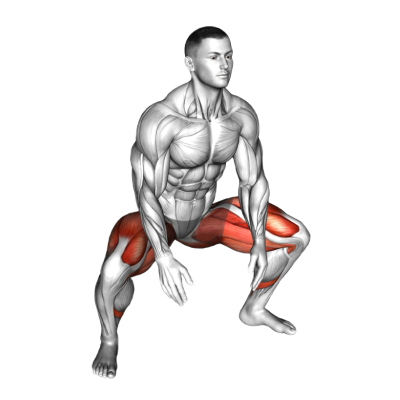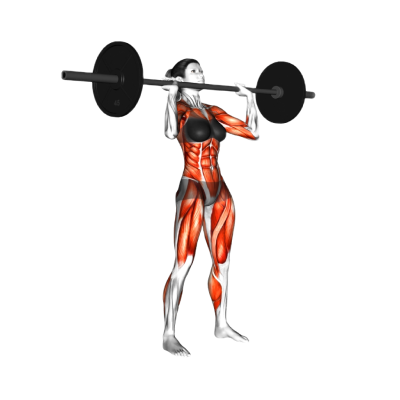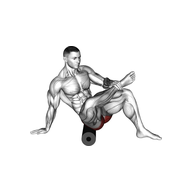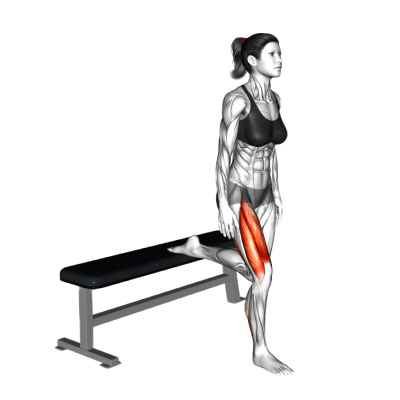What is a Trap Bar Deadlift
A trap bar deadlift (sometimes called a “hex bar deadlift”) is a deadlift variation where you use a bar with a hexagonal frame to perform a deadlift. During this exercise, you should stand inside the bar and hold the attached handles on the sides. Then follow the deadlift steps as usual. Because of the trap bar’s frame, the loading pattern of this lift is different than a traditional barbell. Compared to a conventional barbell deadlift, the deadlift with trap bar puts your body in a more upright position, so there’s less stress on your lower back.
How-to Do Deadlift Trap Bar
- Hinge at your hips and hold the handles of the trap bar. Your shins should be roughly perpendicular to the floor.
- Flex your glutes and hamstrings to extend and straighten your legs, raising the bar.
- Slowly lower the bar back to the ground.
Muscle Worked
Primary Muscle Groups


Quads
"Quads" refers to your quadriceps femoris muscles which flex your leg from the hip joint and extend your leg from the knee joint.

Calves
The calves are the muscles at the back of the lower part of your legs

Hamstrings
The hamstrings flex your knees and extend and rotate your hips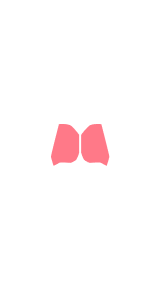

Glutes
The glutes help you extend your thighs from the hips and drive you forward.

Lower Back
The low back helps stabilize your spinal column and connects your upper body to your pelvis.Secondary Muscle Groups


Adductors
The adductors are the muscles on the insides of your thighs that move your legs toward the midline of your body

Obliques
The obliques help you twist your trunk and support your core and spine.

Abs
"Abs" refers to your abdominal muscles, which sit at the front of your trunk between your ribcage and pelvis

Forearms
The forearms help you grip objects and move your hands, wrists and fingers

Traps
Lie on the floor and place a foam roller below your traps and above your shoulder blades.

Hip Flexors
The hip flexors flex your leg at the hip joint, helping you to extend your legs forward.

Shoulders
Your shoulders are ball-and-socket joints which connect your arms to your torsoPro Tips
- Make sure your chest is up and shoulders back to maintain a neutral spine. Don’t round out through your lower back or hunch your shoulders. This prevents strain and lets you properly transfer the force through your hips and legs.
- If the trap bar has both high and low handles, start with the high ones, especially if you're new. What this does is shorten your range of motion. By doing this, you improve your form more effectively as a beginner. This is a good in-between step before you progress to the lower handles.
Equipments
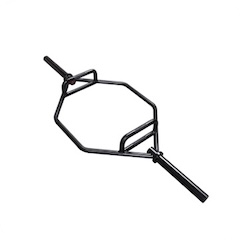
Trap Bar
A trap bar is a plate-loaded device made of two bars welded together into a hexagonal shape with handles for liftingBenefits of Trap Bar Deadlift
- Less Lower Back Strain- The trap bar's design lets you keep your body more upright, which can be less stressful on your lower back compared to traditional deadlifts. If you’ve got back problems or low mobility, this may be a safer lift for you.
- Better Grip Strength- Using a neutral grip (palms faced together) mimics the most natural hand positioning, where you’re not “breaking” at the wrists, or putting your wrist out of alignment with your forearms. Because of this, many lifters find it easier to work with heavier loads. Over time, this strengthens your grip and helps you build bigger, stronger forearm muscles too.
Alternatives
The following exercises target the same primary muscles using different equipment:
Warm Up & Cool Down
Warm Up
- Glute bridges are a great way to activate your posterior chain and butt muscles for heavy lifting. Lie on your back, bend your knees and plant your feet hip-width apart. Drive through your heels to lift your hips into the air. Hold for 30 seconds, then lower. You can also do this move dynamically, pulsing up and down.
- Do slow, controlled squat reps to loosen up your hips, knees, and ankles. This will give you some light activation in the quads and glutes that translates to trap bar deadlifts. Use a lightweight resistance band if you want a bit more muscular engagement from your warm-up.
- Get down on all fours and alternate between arching and rounding your back. This warms up your whole spine and gives you better back mobility for a safer lift.
Cool Down
- Sit down and stick your legs out in front of you. Reach toward your toes, trying to keep your spine as straight as possible. If you can’t reach it, you can modify this exercise by introducing a slight bend in your knees. This stretches your hamstrings out and can relieve tension in your body that you build up after deadlifting.
- Kneel down, sit on your heels and crawl your arms forward, bringing your chest to the floor. This can help your spine decompress and stretch your lower back after a heavy trap bar deadlift.
- Sit with one leg bent over the other, twisting gently toward your bent knee to stretch your spine and release tension in the torso. Hold this pose briefly, then repeat the stretch on the other side.
FAQ


Get fit with Flex
Build muscle & lose weight fast for free.
Download for Free
Available on iPhone + Apple Watch

